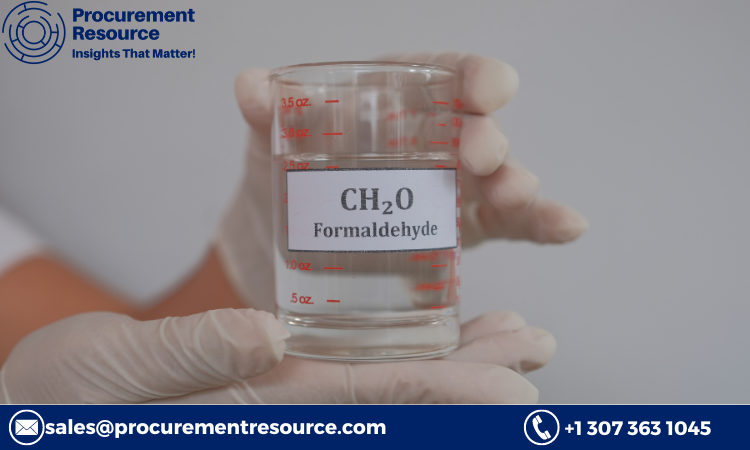
Formaldehyde is a simple organic compound with the formula CH₂O. It is a colorless, flammable gas at room temperature and has a strong odor. Formaldehyde is widely used in the production of industrial resins, such as urea-formaldehyde, phenol-formaldehyde, and melamine-formaldehyde, which are used in the manufacturing of particleboard, plywood, and other wood products. Understanding the production process of formaldehyde is crucial due to its significance in various industrial applications.
Formaldehyde is primarily produced by the catalytic oxidation of methanol. The two main methods used for formaldehyde production are the Formox process and the silver-catalyzed process. Both methods involve the oxidation of methanol, but they differ in the types of catalysts and operating conditions used.
In the Formox process, methanol is mixed with air and passed over an iron-molybdenum catalyst at temperatures between 250°C and 400°C. The reaction yields formaldehyde and water. The silver-catalyzed process, on the other hand, uses a silver catalyst at temperatures ranging from 600°C to 650°C. This process also produces formaldehyde and water, but it operates at higher temperatures compared to the Formox process.
Request For Sample: https://www.procurementresource.com/production-cost-report-store/formaldehyde/request-sample
Manufacturing Report and Process
The manufacturing process of formaldehyde can be broken down into several key steps:
- Methanol Preparation: Methanol is the primary raw material for formaldehyde production. It is typically obtained from natural gas through steam reforming and methanol synthesis.
- Catalytic Oxidation: In this step, methanol is mixed with air and passed over a catalyst. The choice of catalyst (iron-molybdenum or silver) determines the specific process (Formox or silver-catalyzed) used. The reaction takes place in a reactor, where methanol is oxidized to formaldehyde.
- Absorption: The formaldehyde gas produced in the reactor is absorbed in water to form a formaldehyde solution. This step is crucial to control the concentration of formaldehyde in the final product.
- Purification: The formaldehyde solution may contain impurities that need to be removed. Various purification techniques, such as distillation and filtration, are used to ensure the quality of the final product.
- Storage and Distribution: The purified formaldehyde solution is stored in tanks and distributed to various industries for use in the production of resins, chemicals, and other products.
Raw Material Costs
The cost of raw materials is a significant factor in the overall economics of formaldehyde production. The primary raw material, methanol, accounts for the majority of the production cost. Methanol prices can fluctuate due to various factors, including changes in natural gas prices, supply and demand dynamics, and geopolitical events.
In recent years, methanol prices have shown volatility due to fluctuations in natural gas prices and changes in the supply-demand balance. For instance, an increase in natural gas prices can lead to higher methanol production costs, subsequently affecting formaldehyde prices. Additionally, supply chain disruptions, such as those caused by the COVID-19 pandemic, can impact methanol availability and prices.
Apart from methanol, other raw materials, such as catalysts and water, also contribute to the production cost. The choice of catalyst (iron-molybdenum or silver) can influence the overall production cost, as each catalyst has different procurement and replacement costs.
Energy costs are another significant component of the production cost. Both the Formox and silver-catalyzed processes require substantial energy inputs for heating and maintaining reaction temperatures. Therefore, fluctuations in energy prices, such as electricity and natural gas, can impact the overall cost of formaldehyde production.
Latest News
Staying updated with the latest news and developments in the formaldehyde production industry is essential for understanding market trends and making informed decisions. Here are some recent highlights:
- Environmental Regulations: Increasing environmental concerns and regulations are influencing formaldehyde production. Several countries are implementing stricter emission standards and regulations to reduce formaldehyde emissions from industrial processes. This has led to the development of more efficient and environmentally friendly production technologies.
- Technological Advancements: Advances in catalyst technology and process optimization are driving improvements in formaldehyde production efficiency. Researchers are exploring new catalysts and reactor designs to enhance conversion rates, reduce energy consumption, and minimize byproduct formation.
- Market Demand: The demand for formaldehyde and its derivatives continues to grow, driven by the construction, automotive, and furniture industries. Formaldehyde-based resins are essential in the production of composite wood products, which are widely used in these sectors. The increasing demand for lightweight and durable materials in the automotive industry is also boosting formaldehyde consumption.
- Sustainability Initiatives: Sustainability is becoming a key focus in the chemical industry, including formaldehyde production. Companies are investing in research and development to find alternative feedstocks and greener production methods. For example, efforts are being made to produce formaldehyde from renewable sources, such as biomass, to reduce reliance on fossil fuels.
- Industry Collaborations: Collaboration between industry players, research institutions, and government agencies is fostering innovation in formaldehyde production. Joint ventures and partnerships are facilitating the exchange of knowledge and resources, leading to the development of new technologies and solutions.
- Global Market Trends: The global formaldehyde market is experiencing regional shifts in production and consumption. Emerging economies, such as China and India, are witnessing significant growth in formaldehyde production and demand due to rapid industrialization and urbanization. Meanwhile, developed regions, such as North America and Europe, are focusing on improving production efficiency and complying with stringent environmental regulations.
Conclusion
The formaldehyde production industry is a dynamic and essential sector with a wide range of applications in various industries. Understanding the production process, raw material costs, and latest industry trends is crucial for stakeholders to make informed decisions and stay competitive in the market.
As environmental concerns and sustainability initiatives gain prominence, the industry is witnessing technological advancements and regulatory changes aimed at reducing emissions and improving production efficiency. Staying updated with the latest news and developments is essential for industry players to navigate challenges and seize opportunities in the evolving formaldehyde market.
By continuously innovating and adapting to changing market dynamics, the formaldehyde production industry can meet the growing demand for high-quality products while addressing environmental and economic challenges.






